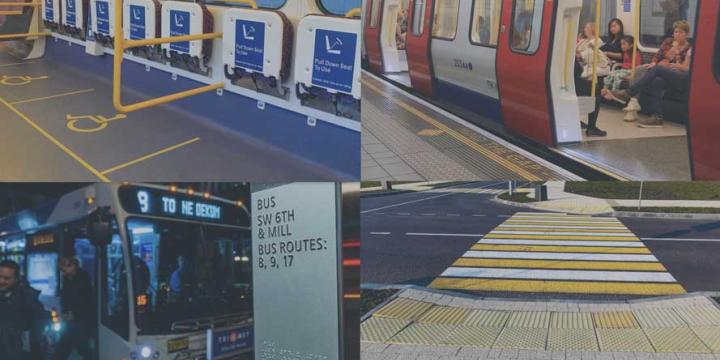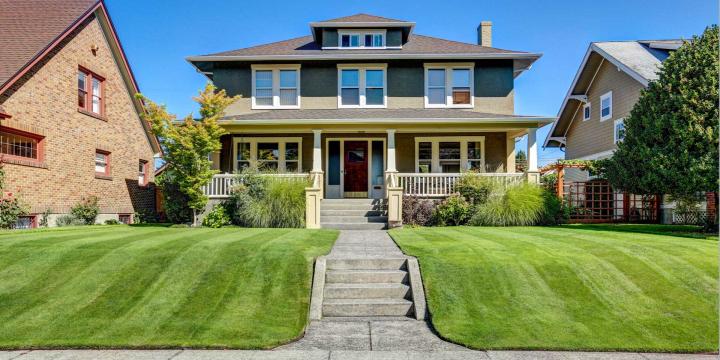Explore Urban Planning Courses
Discover hundreds of courses, with new courses added weekly.
Our most popular courses
Browse by software
Join thousands of urban planners on Planetizen Courses
Browse All Courses
Introduction to Urban Informatics
This course discusses how the field of urban informatics works. You will also learn about the technologies and concepts influencing Urban Informatics, including "Big Data," machine learning, visualization, and data-driven decision making.
Complying With Federal Law in Regulating Telecommunications
Telecommunication technologies and facilities are subject to federal law and intersect with land use regulation and development. This course examines the requirements for such technologies as radio antennas, satellite receiving dishes, cellular towers, and 5G DAS wireless networks to comply with federal laws and regulations.
Federal and State Religious Land Use Statutes
This course will explain what local governments need to do—and to avoid—when enacting and applying land use regulations that affect religious land uses to comply with the federal Religious Land Use and Institutionalized Persons Act (RLUIPA).
Introduction to Smart Cities
This course explores the characteristics and the challenges of smart cities, as well as the potential opportunities for a smart cities approach within the urban design and urban planning fields. This course also discusses the drivers and the essential technologies in a smart city.
Transportation Planning: Principles and Practices of Transportation Finance
This course explains principles of transportation finance and reviews the general structure for funding transportation projects. Learn about the history of U.S. funding, from strong local funding to state and federal involvement to regional funding sources.
Planning Commissioner Training
The new "Planning Commissioner Training" series offers citizen planners a chance to learn the tools to make a positive impact in their communities (available as a separate subscription).
Transportation Planning: Making Transportation Plans—Rationality and Politics
This course explains the major forms of planning applicable to transportation, including rational comprehensive planning, strategic planning, policy analysis, incremental planning, advocacy planning, and communicative planning.
Measuring Neighborhood Segregation and Diversity
This course reviews the various ways to measure both segregation and diversity at the neighborhood scale.
Local Regulation of Marijuana Businesses
This course examines the role of local regulation in states that have legalized marijuana. Learn about marijuana components and products, federal and state laws, zoning, and social equity issues.
Defining Neighborhoods
This course reviews the varying definitions of neighborhoods and examines methods for defining a physical basis and tangible meaning to neighborhoods based on the location of neighborhood centers, boundaries, and spatial extents.
Transportation Planning: Strategies for Working with Roadway Capacity
This course explains the menu of contemporary approaches to modifying or adding to transportation capacity. It provides examples of capacity responses to regional mobility for commuters and local accessibility for communities.
History of City Planning 3: Midcentury Modern (1940-1979)
Discover the impact of World War II and the Cold War in shaping city planning practices and how the tragic destruction and loss of life in World War II somehow created opportunities for planners to test new ideas.
Transportation Planning: Travel Behavior Regulations, Pricing, and Programs
This course reviews the efficacy of regulatory strategies (such as prohibitions and mandates), pricing strategies (such as peak period pricing), and education and information strategies (such as real-time ride-hailing apps).
Transportation Planning: Travel Behavior Principles and Modelling Approaches
This course provides an overview and critique of the four-step model used in transportation planning. By the end of this course, viewers will be able to conceptualize how transportation models can address contemporary problems in transportation planning, such as transit-oriented development.
Transportation Planning: Land Use and Transportation Systems
This course includes a brief history of how land use and transportation have co-evolved over the last 150 years and reviews the roles of transportation systems and technology in influencing land value and locational decision.
History of City Planning 2: Modern Ideas of City Planning (1900-1939)
Explore the development of the city and city planning from 1900 to the outbreak of World War II in 1939. Learn how the birth of city planning as a formal practice shaped the cities that defined the century.
History of City Planning 1: Ancient Times to the Modern Age (7,500 BC to 1900)
Understand the history of urban planning through the context of the development of the earliest cities. Learn about key developments, innovations, and debates in early city planning and apply an analytic lens to the birth of the modern city.
Transportation Planning: Effects on the Environment, Health, and Social Justice
This course discusses the local and global impacts of transportation systems and the mitigation of those impacts. The course also identifies prospects for change, as achieved by technology, transportation management, and pricing.
Transportation Planning: The Role of Transportation Systems in Social and Economic Life
By the end of this course, you will have a strong understanding of the way in which transportation systems interact with society and the economy.
Virtual Reality for Planners 4: Refining the End User Experience
Creating a VR experience is one thing, but managing its use at public events and integrating it into the urban design workflow is an extra, separate step. This course considers the bigger picture and covers a few ways to fine-tune the user’s experience for maximum success.
Virtual Reality for Planners 3: Working with Unity
This course provides a high-level overview of the process involved in creating a virtual reality application and teaches viewers how to assemble a virtual reality application from scratch using Unity how to make the process as successful as possible.

Start Learning with Planetizen Courses
Choose from affordable subscription options to access hundreds of online courses today.
Try Free Courses

























